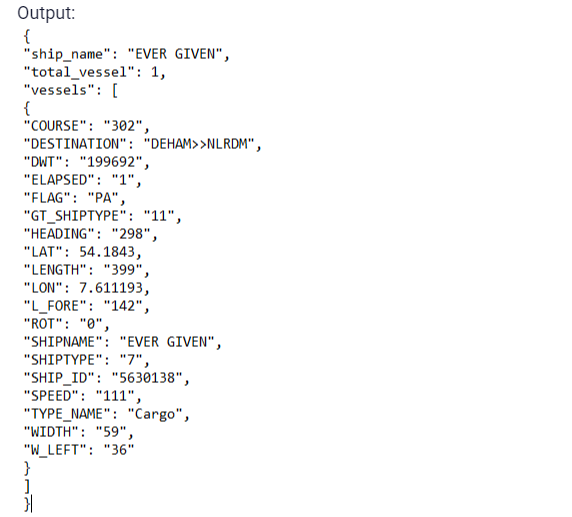A Ship Database API To Stay Up To Date
If you want to know how to leverage a ship database API in 2023, you are in the right place. Keep reading to find out more.
Shipping companies are always looking for ways to improve their business. This is due to the fact that they are constantly transporting goods from one place to another, therefore, they have to be aware of any changes that may occur while valuable cargo is in transit. Since shipping companies have to keep track of so many ships and so many containers, computers have been implemented in the industry for quite some time. This doesn’t mean there’s no room for modernization. APIs promote this process, because they enable data to be accessed and used across different applications. This means that information can be quickly and easily shared between different systems, eliminating the need for manual data entry or file transfers.
APIs are a powerful tool that can help accelerate workflows in a variety of industries. By automating tasks, providing pre-built functions, reducing errors, enabling data to be shared between applications, and providing access to specialized services, APIs can help organizations save time, reduce costs, and improve their overall efficiency. As more organizations adopt APIs, it is likely that we will see even more innovative uses for these tools in the future.
In the case of marine shipping, a significant benefit of an API that provides live information about vessels at sea is increased efficiency. By accessing real-time data on vessel locations, operators can make more informed decisions about routing and scheduling, which can help reduce transit times and improve overall efficiency. This, in turn, can help reduce costs and increase profits. By tracking ships, companies can select the most efficient routes, operators can reduce transit times and increase the number of trips a vessel can make in a given period. This can help reduce costs and increase profits.
So What API Should I Get?
The digital age has made it possible for individuals and organizations to have access to thousands of applications and user interfaces with the aim of streamlining their daily routines and processes, even in an integrated manner. And APIs were specifically created to integrate various applications and their functions, so that developing an app or website doesn’t imply doing everything from scratch. Now that you know everything there is to know about using a ship position API, try out Zyla’s Vessel Traffic Information API and see how easy it is to get started.
To make use of it, you must first:
1- Go to Vessel Traffic Information API and simply click on the button “Subscribe for free” to start using the API.
2- After signing up in Zyla API Hub, you’ll be given your personal API key. Using this one-of-a-kind combination of numbers and letters, you’ll be able to use, connect, and manage APIs!
3- Employ the different API endpoints depending on what you are looking for.
4- Once you meet your needed endpoint, make the API call by pressing the button “run” and see the results on your screen.



